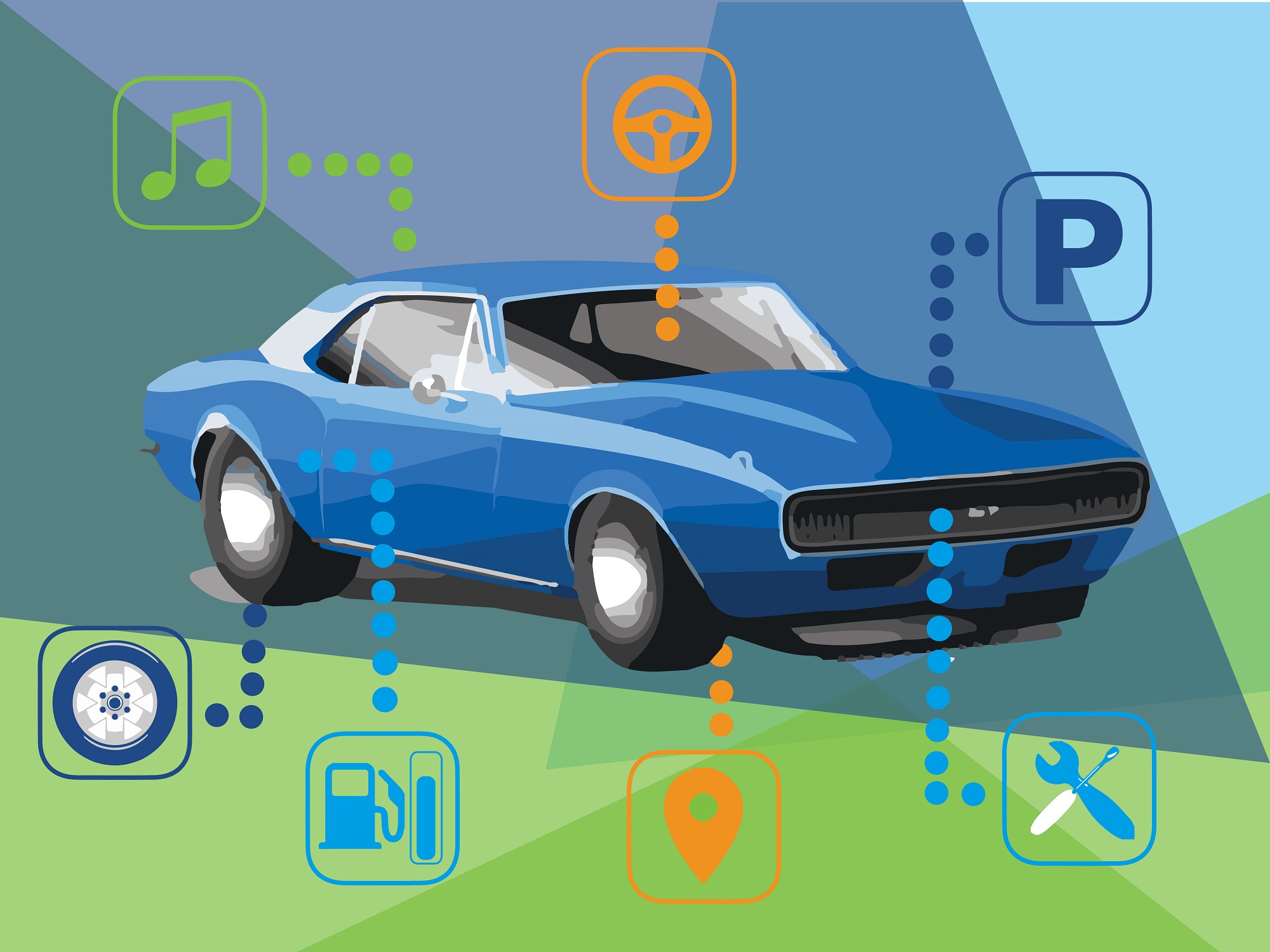Connected cars are called to be the next step in the evolution of the Internet of Things after the popularization of mobile devices and the development of wearables.
At present, there are more than five million vehicles with some degree of connectivity around the world (73% in the United States, 18% in Europe, and 9% in Asia). These are the conclusions of a report done by SDB, experts in automotive technology, and GSMA, the association that brings together the leading mobile operators and manufacturers.
This study states that in four years, in 2018, 35% of the cars sold worldwide will include mobile technology, 18% will offer some kind of integration with smartphones and 9% will be equipped with tethering technology (a process by which a mobile device with internet connection acts as a gateway to provide wireless network access to other devices.)
In parallel, and driven by the growth of these connectivity systems through mobile phones, the study claims that infotainment services (information and entertainment) such as news, the weather, social networking, music and radio streaming will see their popularity increased. According to this study, in 2018 there will be 32.1 million cars that support these services, compared to the 4.3 million cars that had this service in 2012.
A whole variety of new content is being delivered to users in the form of apps, opening a great business opportunity for developers. Such is going to be the evolution of this segment that Ford, for example, is organizing the first official conference of developers of applications for cars: the Automaker App Developer Conference. The event will be held on September 8 in Las Vegas as part of the Super Mobility Week, where all developers interested in creating a new generation of apps will have the opportunity to implement their knowledge to improve or redefine the role of cars as part of a connected life.
Different types of apps for cars
As we’ve already mentioned, the connected car goes far beyond integrating web browsers and jacks for mp3 players. Cars are currently being equipped with systems that allow drivers to access a large number of options and applications. Some of the possibilities already available in the market are:
1. Automakers Market Stores
It refers to the different types of applications that can be found in the app stores or market stores created by automakers such as Renault, Ford, Mercedes, Peugeot, Nissan, Toyota, etc.
These systems depend more on the intelligence integrated in the car than on the use of the mobile phone to connect with the vehicle. Hence, apps are run with the car’s computer rather than with a smartphone, for example. Among the most relevant cases are Renault R-Link and Ford Link.
2. Apps in car
The idea behind this concept is to have an intelligent system in the car that can connect with the mobile phone of the user and take advantage of its full potential. They have a simplified design, intended to facilitate the reading of the contents. Being able to connect to a smartphone, the car increases its features and allows users to interact with popular functions such as the music player and GPS, and it even make calls or search by voice. Among these systems we can highlight Apple CarPlay and Android Auto.
This is undoubtedly the most natural step in the evolution of the communication systems of cars, as most people are already used to manage iOS or Android in their devices, and this is something that makes it easier, more secure and intuitive when interacting with the vehicle. Besides, unlike the aforementioned systems offered by automakers, these systems don’t imply contracts with third parties or additional costs.
Among the brands that will offer CarPlay in their vehicles are BMW, Ford, General Motors, Honda, Hyundai, Jaguar, Land Rover, Kia, Mitsubishi, Nissan, Peugeot Citroen, Subaru, Suzuki and Toyota.
On the other hand, Google expects that the first cars with Android Auto will be sold by the end of this year. The company already has more than 40 partners, such as Honda, Renault, Audi and Seat among others.
3. Second Screen
These are apps that can be controlled from the car’s radio and display on its screen a variety of content, not only concerning the radio, but also about nearby restaurants, shops or malls. As part of these systems we can highlight the Aha and SoundHound apps.
4. Car Mode
These are mobile phone applications that are developed to be used in the cars. They usually offer shortcuts to specific functions like browsing, playing music or listening to the radio, and sometimes they are accessible via voice and even gesture controls. Such applications can be found in the market store of different existing mobile operating systems like iOS and Android, among others. An example of this is the Car Widget for Android.











